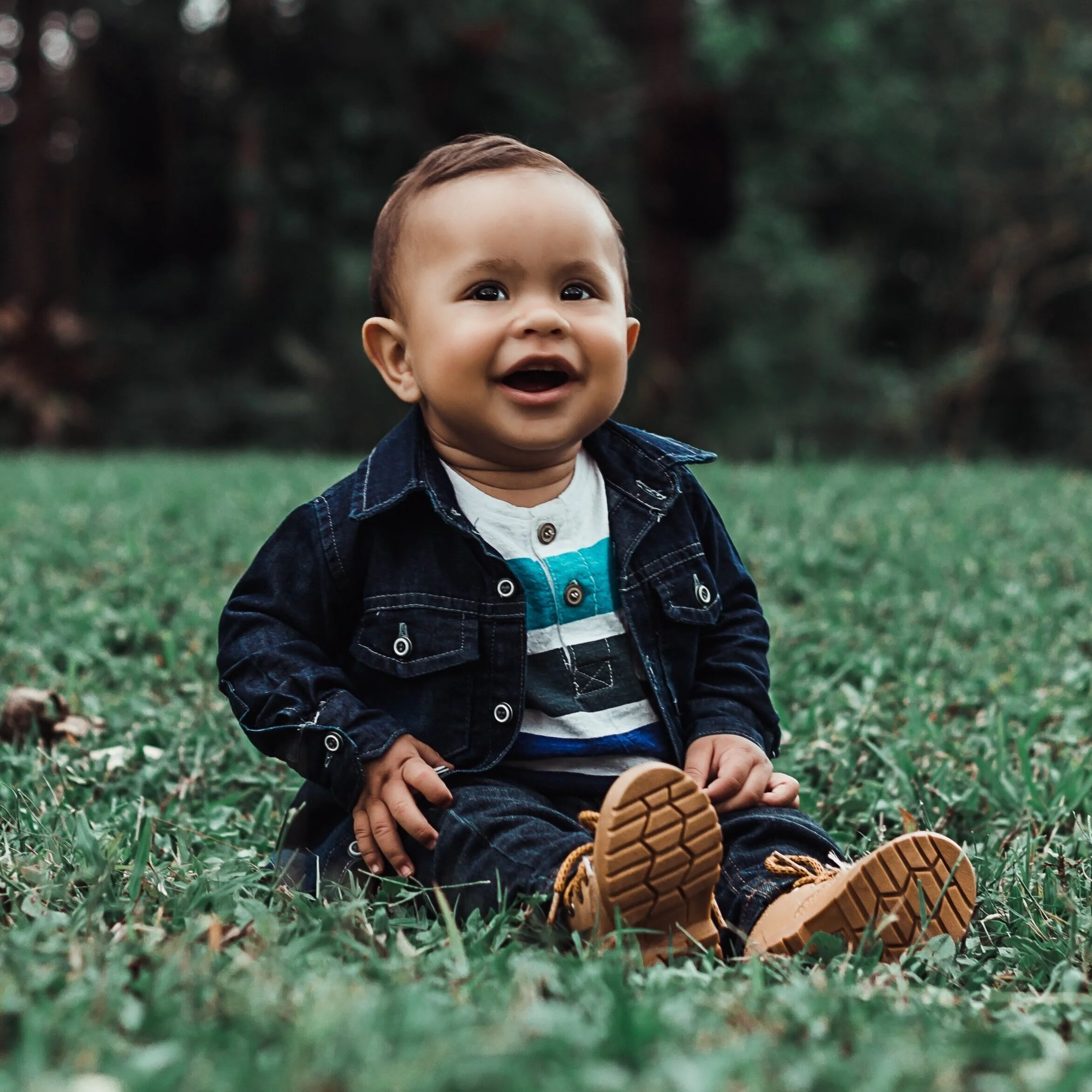Getting Out of the W-sitting Habit
When your baby or toddler is learning to sit and play, they’ll resort to whatever feels comfortable and safe. They want to be able to play as easily as possible without struggling to feel secure in their chosen position. This means you could find your baby playing in all kinds of positions, but some are better than others for their physical development.
W-sitting is one of those not-so-great options.
What is W-sitting?
W-sitting is when a child sits on their bottom with their knees in front of their body and bent outward. Their hips are turned inward and their lower legs are set away from their body, with their feet and ankles pointing outward. Viewed from above, their legs look like a “W.”
Why do kids do it?
Children with decreased core strength will often choose the W-sitting position because it offers a wider base of support. This provides these children with greater stability in a seated position, despite lacking the core strength to sit properly.
Why should they avoid it?
When W-sitting, our hips are forced into internal rotation, creating an imbalance of pressure on the hip joints and surrounding ligaments. This can stress the knees, hips, and pelvis.
Developmentally, babies’ hips are in a comfortable, externally rotated position. Think back to when they lay on their backs with their legs and arms to the sides, or when they start to sit in the ring-sitting position. Their knees easily fall outward and their hips naturally go in the same direction. Having their hips rotated outward, or externally rotated, allows for free movement and less stress on those joints.
Our knees are hinge-joints, meaning they can rotate slightly as needed, but it’s best if they move in a forward-backward direction. The muscles and ligaments of the hip and knee work to stabilize the knee while we move, jump, run, and play. There are muscles that start at the hip joint and end at or below the knee joint. There are also muscles and ligaments that work hard to hold our knees together as we move, jump, run, and play. Muscles are flexible and able to tolerate stretching and tightening as we move. Ligaments, however, have a much harder time recoiling back to a strong position after being continually stretched. W-sitting creates rotational forces that cause the ligaments in the knee to be stretched over time. Over time, W-sitting can cause future instability in both the hip and knee joints as the ligaments are stretched and weakened.
W-sitting also negatively impacts our pelvic and spinal positioning. Poor sitting posture creates a posteriorly tilted pelvis, encourages a rounded back, and forces your baby’s head forward to play or interact with what is in front of him. Rounded posture also restricts a child from rotating side-to-side to reach and play, and it limits dynamic strengthening of their trunk and core musculature. Limited trunk rotation and difficulty reaching to either side can affect communication between the left and right sides of the brain and result in future problems with coordination and balance. The sooner these issues are addressed, the less likely they are to affect your child’s ability to play and explore as they get older!
What should we do instead?
Encourage other sitting positions during play! These four are good options:
Sitting Cross-legged
This position allows the hips to be comfortably externally rotated and promotes good posture while playing! It also allows for lots of reaching and playing.
Stacked kneeling
To assist your child to flip from W-sitting to short-stacked-kneeling, use your whole hands to hold their lower legs and bring their lower legs under their thighs, flipping their ankles and feet inward so they are pointing underneath their bodies instead of out to the sides. They will most likely return to their comfortable W-sitting at some point, maybe in a minute, maybe in five minutes. Continue to gently correct their position. This consistent practice and repeated change will eventually create a new habit of kneeling correctly.
Side-sitting
Remember that high school cheerleader pose? This position promotes strong core strength and allows for great rotation of the trunk to reach high and low. This position is also a necessary transition to work through when first learning to move from belly to sitting and when later when moving from sitting to standing. Don’t forget to practice this sitting pose on both sides!
Long-sitting
While this is sometimes hard for adults, children can often sit comfortably with their legs straight in front of them, either with both legs together or open like a “Y.” If your child is three or older, the other sitting options usually lead to a more comfortable sitting position that promotes upright posture with play for a longer period of time. However, if she’s under two years old, long-sitting should be easy and helpful for many transitions.
Jessica is an experienced physical therapist passionate about early development, gross motor play, and improving daily function for those with neurological diagnoses. She earned her undergraduate degree in kinesiology from Michigan State University and her doctorate in physical therapy from Daemen College. Practicing for nearly seven years, Jessica has worked with children and families in hospital, outpatient, early intervention, school-based, and private clinical settings.
Jessica lives in northern Michigan, where she spends as much time as possible outside. She’s mom to five-month-old Declan and aunt to two energetic toddlers, two-year-old Tallulah and three-year-old Grayson.








